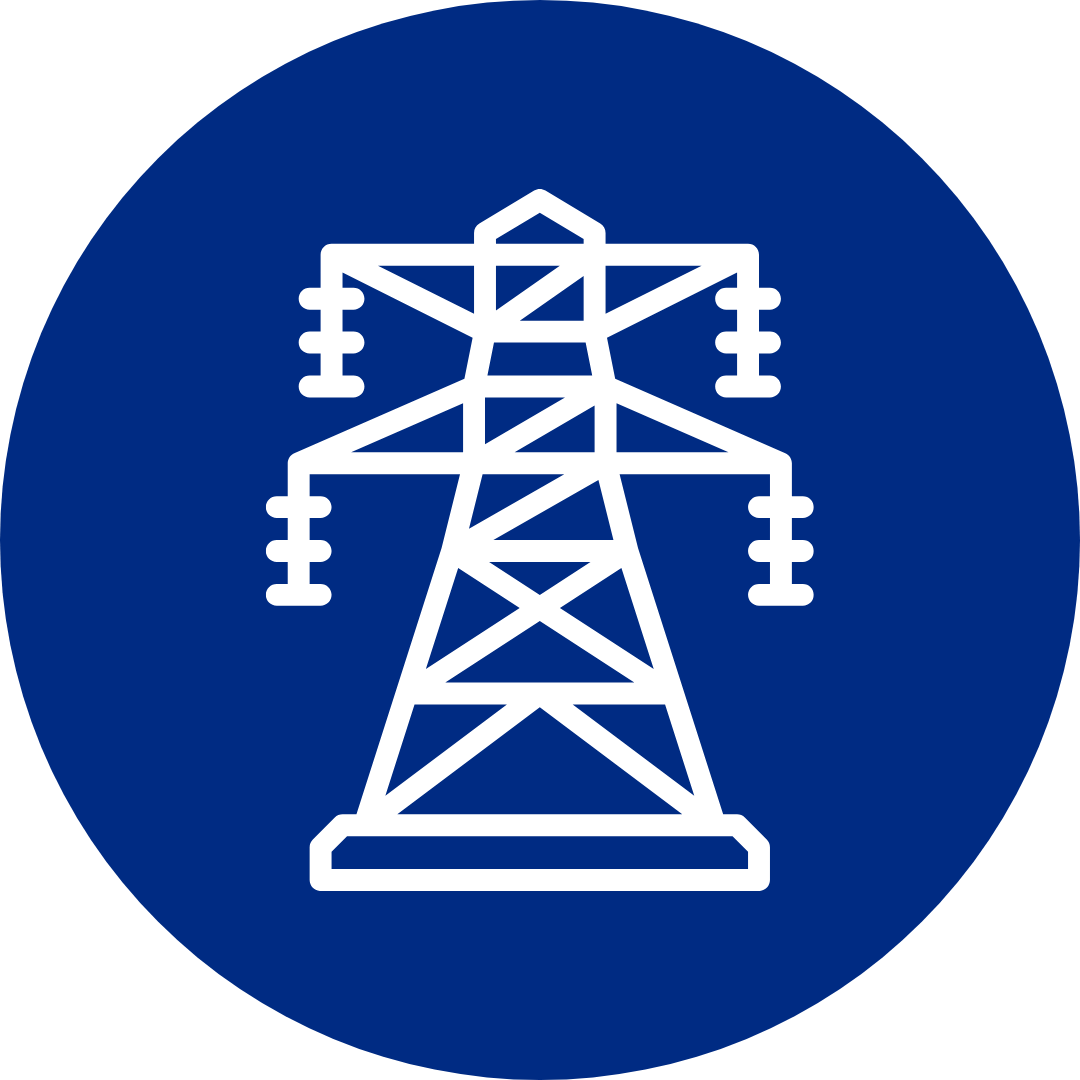Braided cables have become a key component in a variety of applications, from everyday electronics to industrial settings. Known for their strength, flexibility, and durability, these cables offer enhanced protection and longevity compared to standard cables.
At Cableworld, we specialise in providing high-quality braided cables for a wide range of uses, ensuring that our products meet the highest standards of performance and reliability.
What is a Braided Cable?
A braided cable is an electrical cable that features an outer layer of woven strands, typically made from materials such as copper, nylon, or stainless steel.
This braided layer acts as a protective sheath around the cable's core, providing enhanced durability and shielding against physical damage. The braiding is created by weaving multiple strands together in a crisscross pattern, forming a flexible but sturdy barrier.
This braided structure not only adds mechanical strength but also offers additional protection against wear and tear. The braided layer helps to maintain the integrity of the cable, preventing internal components from being exposed to damage caused by bending, stretching, or external forces.
Types of Braided Cables
Braided cables come in various forms, each designed for specific applications. Braided power cables are commonly used in industrial and heavy-duty environments where durability is essential. These cables are often found in machinery, power tools, and equipment that require reliable, long-lasting power connections.
Another type is braided wire cables, which are used in applications that require strong electrical conductivity and physical protection. These are often used in aerospace, automotive, and marine industries, where cables are exposed to harsh conditions and need to withstand vibrations, high temperatures, and moisture.
The material used in cable braiding plays a crucial role in its performance. For example, copper braiding offers excellent conductivity and shielding against electromagnetic interference (EMI), making it ideal for sensitive electronic equipment. Nylon, on the other hand, is lightweight and flexible, making it a popular choice for portable cables. Stainless steel braiding provides superior mechanical strength and corrosion resistance, making it suitable for demanding industrial environments.
Choosing the right material depends on the specific needs of the application, whether it's electrical performance, flexibility, or environmental resistance. At Cableworld, we offer a range of braided cables to suit a variety of projects, ensuring the best possible performance and durability for each application.
Braided Cable vs Normal Cable
Durability and Strength
When comparing braided cables to standard cables, one of the most significant advantages is durability. The braided exterior provides an extra layer of protection that shields the internal wires from everyday wear and tear, such as bending, pulling, or abrasions.
This design makes braided cables less likely to fray or break over time, particularly in environments where cables are frequently moved or subject to physical stress. Normal cables, often made with a plastic or rubber outer layer, tend to wear down faster, especially with heavy use.
The added strength of braided cables not only extends their lifespan but also makes them more reliable in critical applications.
Flexibility and Tangle Resistance
Braided cables are renowned for their flexibility and resistance to tangling, which makes them more convenient than standard cables. The braided design allows the cable to maintain its shape and bend easily without kinking, which is a common issue with non-braided cables.
This flexibility is particularly beneficial for portable applications, such as charging cables or audio cables, where the cable needs to move freely without tangling. The tangle-resistant nature of braided cables improves user experience, as they can be stored and handled with minimal effort, reducing the frustration of untangling knots.
Benefits of Braided Cables
Durability and Longevity
One of the key advantages of braided cables is their superior durability and longevity. The braided structure offers a strong outer layer that can withstand external damage like bending, kinking, and even crushing.
This makes braided cables ideal for long-term use, especially in demanding environments where cables are regularly subjected to physical stress. Whether in an industrial setting or home use, braided cables provide reliable protection against the elements, ensuring they last longer than their non-braided counterparts.
Electrical Interference Shielding
Braided cables are also effective at shielding against electromagnetic interference (EMI), which can disrupt the performance of electronic devices. The braided layer acts as a protective shield, reducing the risk of signal interference from nearby electronics or power sources.
This makes braided cables particularly beneficial for audio, data, and power applications, where clear, uninterrupted signal transmission is essential. The shielding properties ensure better overall performance, especially in environments with high levels of electrical noise.
Temperature and Environmental Resistance
Another significant benefit of braided cables is their ability to withstand extreme temperatures and harsh environmental conditions. The braided material provides an extra layer of insulation, protecting the internal components from damage caused by heat, cold, or moisture.
This makes braided cables ideal for outdoor use, industrial applications, or any setting where they may be exposed to the elements. Whether it’s high-temperature environments or areas with significant wear, braided cables maintain their integrity and performance.
Improved Safety Features
Braided cables also offer enhanced safety features due to their protective layers. The robust design helps to prevent the inner conductors from being exposed, reducing the risk of electrical short circuits or fires. Braided cables often include better insulation and more durable construction, which can prevent accidental damage to the internal wiring.
In environments where safety is a critical concern, such as industrial or commercial settings, braided cables provide peace of mind by minimising electrical hazards and offering superior protection against potential failures.
Are Braided Cables Better?
Performance Comparison
When comparing the performance of braided cables to normal cables, there are clear advantages in specific areas. Braided cables generally excel in longevity due to their enhanced durability.
The braided exterior offers greater mechanical resistance, reducing the wear and tear that commonly affects standard cables over time. Additionally, braided cables tend to offer better signal strength, particularly in data and audio transmission, because their structure helps shield against electromagnetic interference (EMI) more effectively than non-braided cables.
In environments where cables are frequently handled, moved, or exposed to physical stress, braided cables consistently outperform standard cables.
When Braided Cables are the Best Choice
Braided cables are the preferred choice in scenarios that demand durability, flexibility, and reliability. High-performance audio systems benefit from braided cables because of their superior EMI shielding, ensuring clearer sound quality.
In industrial settings, where cables are subject to heavy use and must endure harsh conditions, braided cables provide the necessary strength and resilience.
Braided power cables are also ideal for outdoor and heavy-duty applications, as their tough outer layer protects them from environmental damage, such as moisture, abrasion, and temperature fluctuations. In these demanding environments, the durability and performance of braided cables make them the superior option.
Choosing the Right Braided Cable
Factors to Consider
When selecting a braided cable, it's important to consider several key factors to ensure optimal performance for your specific application. The material of the braid, whether it’s copper, nylon, or stainless steel, plays a crucial role in the cable’s flexibility, strength, and durability.
For example, copper braids offer excellent electrical conductivity and EMI shielding, while nylon provides lightweight flexibility for more portable applications. Additionally, the level of shielding required depends on the environment in which the cable will be used. For applications like data transmission, ensuring the cable has sufficient shielding to prevent signal interference is critical.
The application of the cable also determines whether you should prioritise flexibility, strength, or shielding. Power transmission cables, for instance, need to withstand high electrical loads and environmental conditions, while data or audio cables may require enhanced signal protection and flexibility.
Braided Cable Frequently Asked Questions
What is a braided cable?
A braided cable is a type of cable that features a woven outer layer made of wire or other materials, such as nylon, copper or steel wire, which is designed to provide added strength, flexibility, and protection. The braiding helps shield the internal conductors from physical damage and can also offer protection against electromagnetic interference (EMI).
What are the benefits of braided cables?
Braided cables are known for their durability and resistance to wear and tear. They are less prone to fraying or breaking compared to standard cables and offer superior protection in harsh environments. Braided cables also provide enhanced flexibility, reducing the risk of tangling, and they are often more resistant to electrical interference, making them ideal for sensitive data or audio applications.
How does a braided cable differ from a normal cable?
The main difference between a braided cable and a normal cable is the protective outer layer. In braided cables, this layer is woven, which provides better mechanical strength and resistance to abrasion and environmental factors. This makes braided cables more durable and long-lasting, particularly in environments where they are exposed to frequent movement or physical stress.
Are braided cables better for power distribution?
Braided cables can be better for power distribution in environments where the cables are exposed to harsh conditions or need extra mechanical protection. Their braided exterior helps prevent damage and ensures longevity, making them suitable for heavy-duty or outdoor power applications. However, the choice between braided and normal cables depends on the specific needs of the installation, including factors like flexibility, environment, and load.
What materials are commonly used in braided cables?
Common materials used in braided cables include copper, stainless steel, and nylon. Copper is frequently used in braided shielding due to its excellent conductivity and shielding properties, while stainless steel provides additional strength and durability for more industrial applications. Nylon is often used for its flexibility and lightweight characteristics, making it ideal for portable or consumer electronics.
Can braided cables prevent signal interference?
Yes, braided cables are particularly effective at preventing electromagnetic interference (EMI). The woven structure of the braid acts as a shield, protecting the internal conductors from external interference, which is especially important in applications involving data transmission, audio, or video signals. This helps maintain the integrity and clarity of the transmitted signals.
What are the common uses of braided cables?
Braided cables are used in a wide range of applications, including power distribution, data transmission, audio systems, and industrial environments. They are particularly useful in situations that require high durability, flexibility, and protection from environmental factors. In industries such as construction, automotive, and electronics, braided cables offer enhanced performance and longevity.
How do I choose the right braided cable for my project?
Choosing the right braided cable depends on several factors, including the intended application, the environment in which the cable will be used, and the specific performance requirements.
Consider the material of the braid, the level of shielding needed, and whether flexibility or durability is a priority. Consult with an expert.
Alarm Cable
Arctic Grade Cable
Armoured Cable
Audio & Speaker Cable
Auto Cable
Bare Copper
Belden Equivalent Cable
Co-axial Cable
Data Cable
DC Telecom Cable
Defence Standard Cable
Emergency Lighting & Fire Detection Cable
EV Cable
Festoon
![Loose Tube Fibre Cross Section]()
Fixed Wiring PVC & LSOH Cable
Flatform
Flexible Control Cable
Flexible PVC Cable
Flexible Rubber Cable
General Wiring Cable PVC & LSOH
High Temperature Cable
High Voltage Cable
![5308 p1 t2 cat Cross Section]()
LSOH Flexible Cable
Medium Voltage Cable
NYY & N2XH Cable
Protected Wiring Cable
Silicone Cable
Solar Cable
Split Concentric Cable
Spiral Cable
Temporary Power Cable
Tri-Rated Cable
Welding Cable
Alarm Cable
Arctic Grade Cable
Armoured Cable
Audio & Speaker Cable
Auto Cable
Bare Copper
Belden Equivalent Cable
Co-axial Cable
Data Cable
DC Telecom Cable
Defence Standard Cable
Emergency Lighting & Fire Detection Cable
EV Cable
Festoon
![Loose Tube Fibre Cross Section]()
Fixed Wiring PVC & LSOH Cable
Flatform
Flexible Control Cable
Flexible PVC Cable
Flexible Rubber Cable
General Wiring Cable PVC & LSOH
High Temperature Cable
High Voltage Cable
![5308 p1 t2 cat Cross Section]()
LSOH Flexible Cable
Medium Voltage Cable
NYY & N2XH Cable
PAS - BS5308 Instrumentation Cable
Protected Wiring Cable
RS-232 Cable
RS-485 Cable
Silicone Cable
Solar Cable
Split Concentric Cable
Spiral Cable
Telephone Cable
Traffic Signal Cables
Temporary Power Cable
Tri-Rated Cable
Welding Cable
Airports
Automation & Process Control
![Automotive]()
Building & Construction
Communication & Telecommunication
Data Centres
Defence
![DNO 1]()
E-Mobility
Food & Beverage
Marine & Offshore
Mining, Drilling & Tunnelling
OEMs
Oil, Gas & Petrochemical
Rail & Metro
Renewable Energy
Switchgear
Power
Water Treatment













































